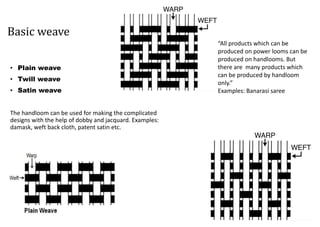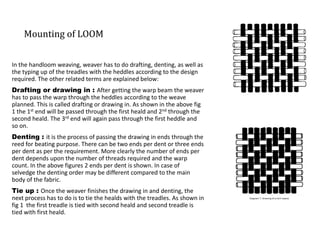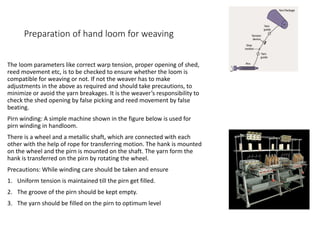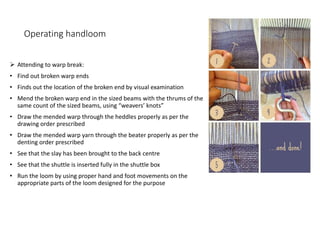This document discusses handlooms and their components and operation. It provides details on:
- What a handloom is and how it differs from a power loom in being manually operated.
- The basic parts of a frame loom including the warp roller, heddles, shuttle, beater, and treadles.
- The motions of a handloom including shedding, picking, beating-up, let-off, and take-up.
- How a handloom is set up and mounted, including drafting, denting, and tying the treadles to the heddles.
- The process of operating a handloom, including attending to warp and weft
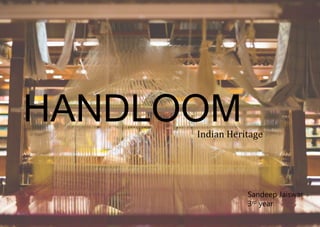
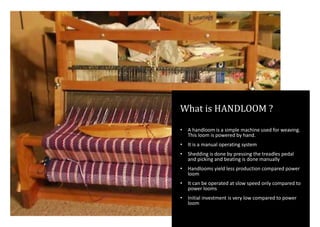




![Motions of loom [Primary motion]
Beating-up
The function of beat up
mechanism is to push the weft
thread that has been inserted
across the warp threads in a shed,
up to the fell of cloth. Fell of the
cloth is the position of the last
pick in cloth woven on the loom.
The beating-up of the weft to the
fell of cloth is carried out by the
beater.
Shedding motion
Shedding separates the warp yarns inti two layers for the insertion of a pick. The function of
shedding mechanism is to raise and lower the heddles. Which carry a group warp ends down
through heald eye.
Picking motion
Picking motion inserts a weft from one side to the other side of the
fabric.
In handlooms, pick is inserted with the help of a shuttle through
the shed opened by the shedding mechanism. i.e. between the two
layers of warp shed](https://image.slidesharecdn.com/handloom-200915174137/85/Frame-Handloom-7-320.jpg)

